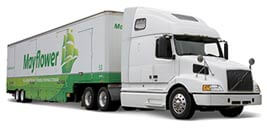METCALF MOVING BLOG
5 Tips for Beginners on Packing a Living Room for Moving
The most frustrating part of a new move is often the packing process. It’s one of the final steps before you begin your journey to a new home.
If you struggle with finding the motivation or energy to pack up your more overwhelming living spaces, you’re not alone.
We’re here to help. Keep reading to learn a few tips and tricks for making the process of packing a living room just a bit easier.
1. Declutter First
The first step to a successful packing process is decluttering and getting rid of things that you no longer need.
Take an inventory of everything that needs to come with you for sure and then look at the rest. How much of it is composed of things that you genuinely love and want to keep? How much is the product of a bit of hoarding?
There are several great decluttering processes that you can go through, including the ever-popular technique of keeping what you love and discarding the things you don’t. Or the method of Swedish death cleaning.
These are both great ways to really look at your belongings and decide whether these things still hold the same value as they did when you got them.
Declutter first, and you’ll have less to pack.
2. Start with Breakable Objects
Getting all of your breakable objects out of the way will help make the rest of the packing process easier.
Breakable objects can all be wrapped and boxed as you go. Wrap them in packing paper or bubble wrap. Make sure you place several layers of packing material on the bottom of the box. Place your wrapped fragile items in the box with heavier items on the bottom. Add more packing material to sides and top of packed items to prevent shifting and possible breakage.
Tape the boxes adequately and label them “fragile” on all sides.
3. Cover One Section at a Time
Anyone who has cleaned a room before knows how easy it is to get distracted when you find an object that belongs elsewhere or something that brings you nostalgia. This is how you lose time.
Commit to covering one section of the room at a time, or one type of item at a time. This way, you’ll have a clear path of action and more actionable goals.
When you find something that doesn’t belong (perhaps you find an object that belongs in the boxes for the kitchen), don’t leave your area. Simply place it to the side until your section of packing is complete.
4. Organize Before Packing
Packing a box feels somewhat like a game of Tetris. Everything needs to fit in just the right way to avoid leaving too much extra space or having boxes that are cramped and potentially harmful to the breakables.
Organizing first will allow you to visualize what can go into each box. This way, you don’t have to get mostly packed just to unpack when you realize something isn’t fitting quite right.
You’ll likely need boxes for paintings and wall hangings, boxes for valuables, boxes for books, and so on.
5. Get Help With the Furniture
If you’re taking a more DIY approach to moving, don’t try to do everything alone. If you’ve never moved large furniture before, you might be at risk of damaging your things.
Ask for help from friends, neighbors, and potentially even movers if you find that this approach isn’t working.
You can also choose to sell your current furniture and buy new things later if things are too cumbersome to transport.
Packing a Living Room Doesn’t Have to be Hard
When you’re working on packing a living room for your move, focus on these helpful tips. It’s easy to get overwhelmed with such a large and lived-in space, but once it’s over, you’ll feel so much relief.
For more posts like this, or to seek out movers for your new journey, visit our site and contact us.









